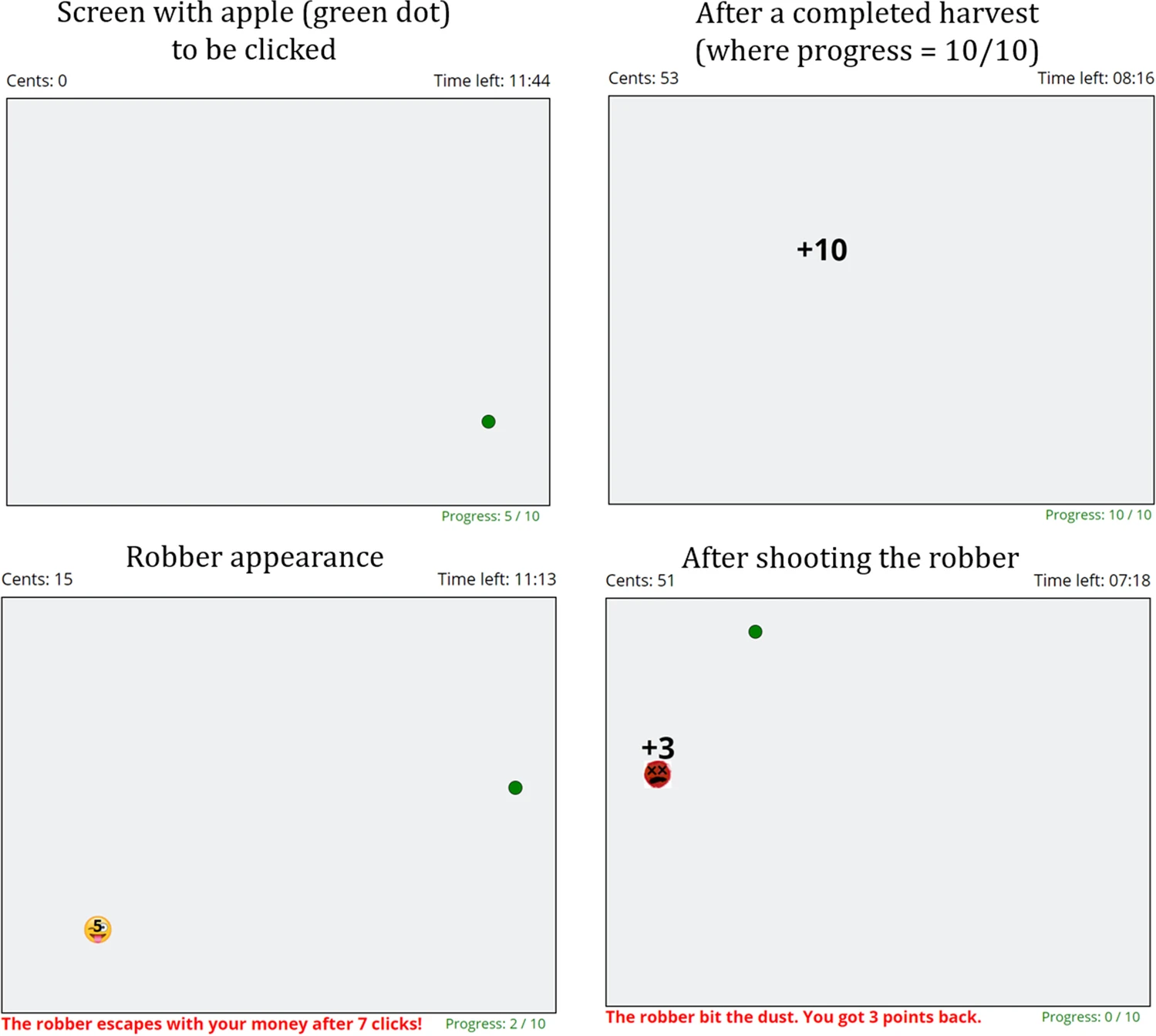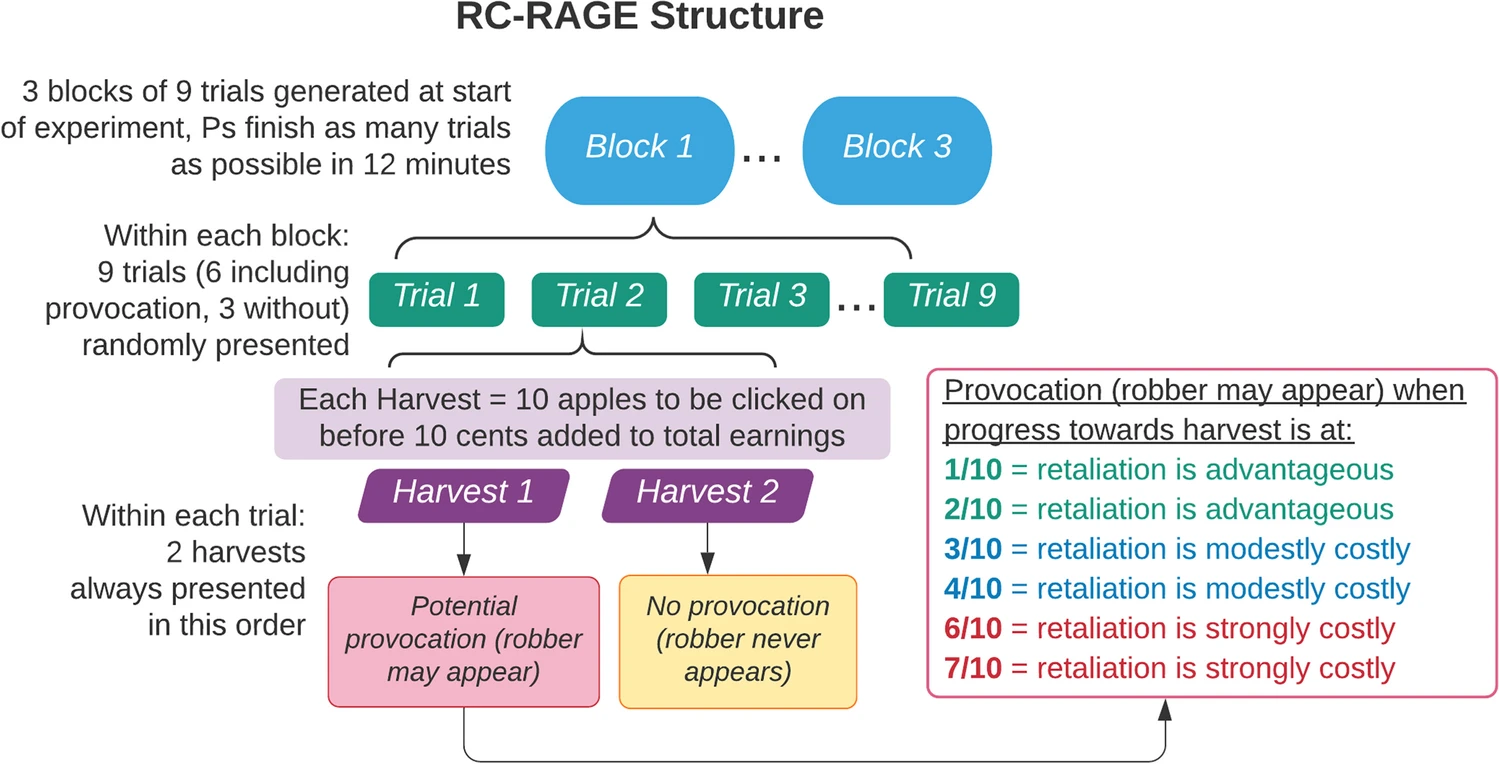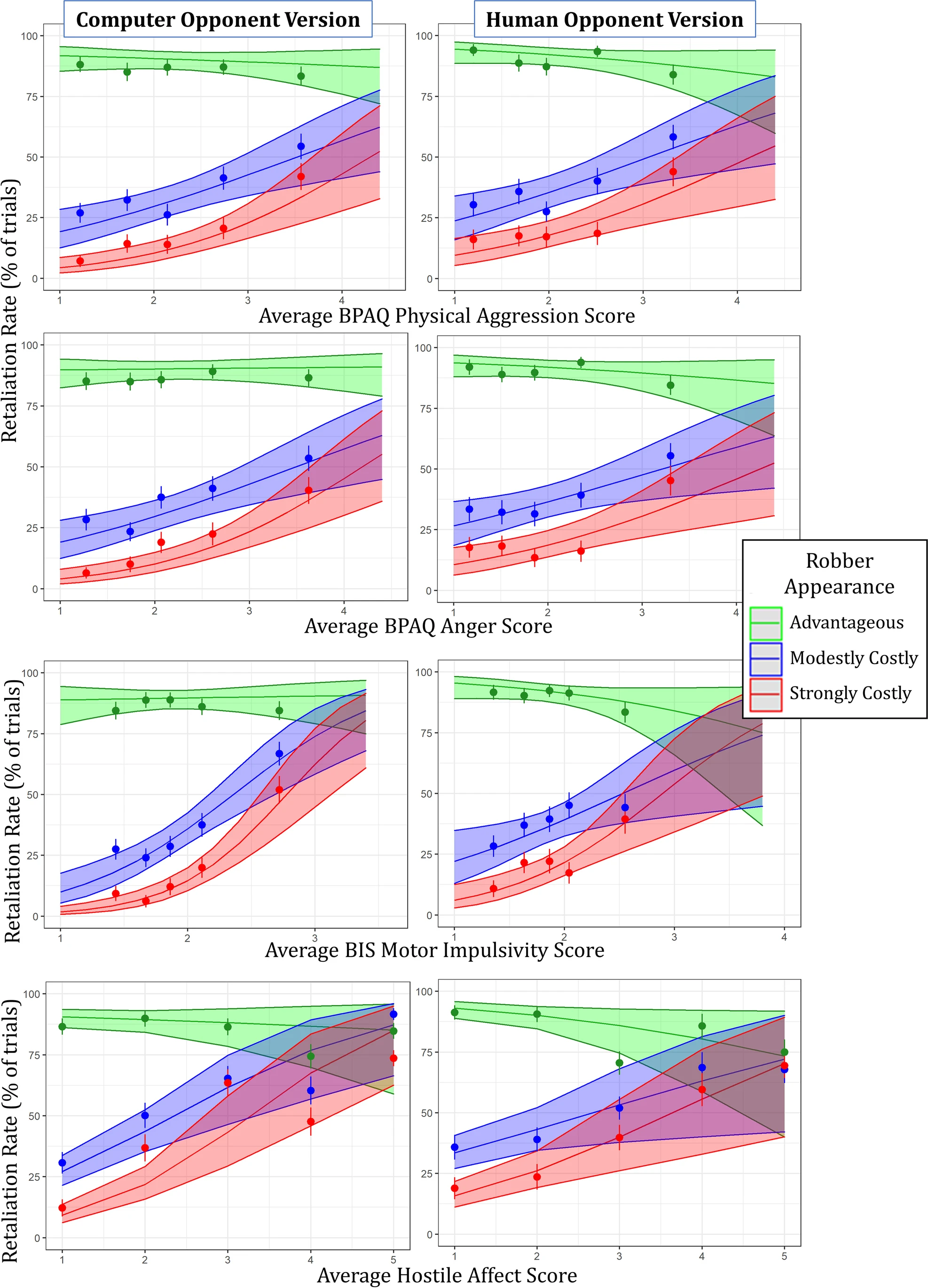Have you ever seen someone who, after being wronged, seems more concerned about a way to get revenge than in stopping to think about what happened and whether revenge is even worth it?
Reacting to aggressions without thinking can lead to bad consequences, ranging from relatively mild, such as a heated discussion where impoliteness escalates to rudeness, to disastrous, such as that rude discussion transforming into a full-fledged bar fight ending with an arrest.
People differ in their ability to exert self-control to avoid engaging in reactive aggression (i.e. aggression after being provoked). And while, admittedly, it is an uncomfortable situation to suffer an aggression to start with, making decisions on whether (and how) to react in those situations is an important life skill.
Reactive aggression is also a fascinating topic in cognitive science. To truly understand it, researchers need precise definitions of self-control, methodologies that allow displaying reactive aggression in a controlled environment, and to test how it relates to state and trait measures of individual differences.
With these concerns in mind, Kimberly Meidenbauer, Kyoung Whan Choe, Akram Bakkour, Michael Inzlicht, Michael Meidenbauer, and Marc Berman (pictured below) designed a novel paradigm: Retaliate or Carry-on: Reactive Aggression Experiment (RC-RAGE). They introduce it in “Characterizing the role of impulsivity in costly, reactive aggression using a novel paradigm”, recently published in Behavior Research Methods, a journal of the Psychonomic Society.

Reactive aggression and self-control
Theories of reactive aggression tend to agree on a sequence of events that leads to it:
- A provocation occurs, which triggers a desire to retaliate
- If the provoked individual has sufficient self-control, they will inhibit this desire
- If their self-control is impaired or insufficient to inhibit the aggressive response, the individual will retaliate.
Key within these steps is the notion of self-control. This construct can be thought of as an individual difference comprising:
- Characteristics such as the ability to delay gratification, being persistent, exerting caution, and inhibiting aggressive behaviors when frustrated.
- Conscious efforts to control one’s behavior when competing conflicting goals are present (i.e., retaliation vs dismissing an aggression).
- Tendencies to make decisions based on an automatic or heuristic mode (i.e., if I’m hit, I hit back), or using a cognitively demanding, context-dependent mode (i.e., what is in my best interest to do?)
This complexity creates a need to create methodologies that allow teasing apart the contribution of variables associated with stable traits (i.e., self-control) and situational cues (i.e., the context where the initial aggression takes place), and at the same time, provide a safe, ethical, and controlled environment where people can display reactive aggression behavior.
The RC-RAGE paradigm
The study’s authors designed the RC-RAGE to differentiate variables that affect reactive aggression in a controlled environment while respecting ethical and logistical constraints.
Specifically, it was designed as a methodology where provocations are visually salient, prolonged (which puts more pressure on self-control), and where participants can retaliate easily and immediately if they decide to do so. Moreover, it provides a clear explanation of the circumstances under which retaliation is advantageous or costly from a decision-making perspective.
Participants using the RC-RAGE harvest apples in a virtual environment and receive a monetary compensation contingent on the number of harvests (i.e., a set of 10 apples) that they collect throughout the experiment (10 cents per harvest). A count of their total earnings is displayed at all times on the screen. In some of the trials, an opponent (referred to as the “robber”) appears and steals part of the participants’ collected earnings (i.e., 5 cents). When this happens, participants can retaliate by “shooting” the robber.
If they do so, they get part of the stolen money back (i.e., 3 cents), but lose whichever progress on the trials’ apple harvest they had. If they ignore the robber, they can continue to collect apples and complete a harvest, but the robber escapes with the stolen money. The figure below shows example screenshots of events in the experiment).

The time at which the robber appears is manipulated in a way that, if the robber appears early on (i.e., after only 1 or 2 apples have been collected), it is more profitable to retaliate, whereas if the robber appears after 3 or more apples have been collected, it makes more financial sense to ignore it and finish the harvest. This also means that retaliating is increasingly costly as the number of collected apples in the trial is higher.
The structure of the trials is manipulated to ensure that participants experience trials where no robber appears, trials where a robber appears at a time where retaliation is financially advantageous (i.e., after 1-2 apples have been collected), and trials where the financial cost of retaliating is modest (i.e. after 3-4 apples have been collected), or high (i.e., after 6-7 apples where collected). The figure below summarizes the experimental structure.

Testing the RC-RAGE
The authors hypothesized that trait and state individual differences would play a role in the tendency of participants to retaliate and used a variety of psychological measures to test it. In addition, the authors tested two versions of the task, one where participants were informed that they would be playing against a computer, and one where participants were made to believe that they were playing against another (human) participant. They hypothesized that both tasks would be able to reflect relationships between psychological measures and retaliation behavior.
As shown in the penultimate panel figure below, there was a link between the tendency to act impulsively and costly retaliation behavior: participants with higher scores on dispositional motor impulsivity (a subscale of the BIS-11, reflecting a tendency to act impulsively) retaliated on a higher percentage of trials in conditions where retaliation was costly. Note that the patterns are similar in the computer and human opponent versions of the experiment and that high retaliation rates are observed regardless of motor impulsivity scores when retaliating is financially advantageous (as expected).

The tendency to display physical aggression and experience anger (measured through the BPAQ) also showed a similar relationship with retaliation rates, as shown in the first two panels in the figure above.
More to discover about the RC-RAGE
If you want to delve deeper into the RC-RAGE, the paper includes many additional and interesting analyses, its data is available through the Open Science Framework, and GitHub provides a demo of the task and the code of the RC-RAGE paradigm.
Featured Psychonomic Society article
Meidenbauer, K.L., Choe, K.W., Bakkour, A., Inzlicht, M., Meidenbauer, M. & Berman, M. G. (2023). Characterizing the role of impulsivity in costly, reactive aggression using a novel paradigm. Behavior Research Methods.https://doi.org/10.3758/s13428-023-02066-9
